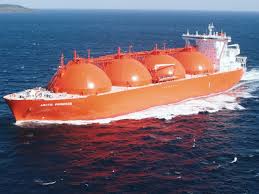
From The Australian and as predicted at MB almost a year ago now:
GAS export contracts underpinning Australia’s $US200 billion ($222bn) worth of new and under-construction LNG plants are coming under pressure as US-led competition leads Asian customers to demand cheaper LNG from two of the nation’s big projects.
Woodside Petroleum faces hurdles in price talks over its Pluto project in Western Australia, and India is calling for lower prices on one of ExxonMobil’s Gorgon contracts.
It is understood Pluto’s two customers, Tokyo Gas and Kansai Electric, are forcing Woodside to take changing global gas dynamics into account in price talks over their 15-year contracts, meaning new Pluto pricing from April next year is unlikely to be as healthy as big WA gas contracts signed on other LNG projects such as Gorgon.
At the same time, Indian newspapers have reported state-owned gas company GAIL, which will import gas from the Sabine Pass LNG project in Louisiana, wants cheaper prices on gas it has agreed to buy from Gorgon through Petronet, in which GAIL has a 12.5 per cent stake.
The developments, and any precedents that eventuate, do not bode well for Gorgon operator and 50 per cent owner Chevron, which revealed in May that a $30bn gas deal with Korea Gas had fallen through, meaning 35 per cent of its volumes from the 15.6 million tonnes a year project are uncontracted.
The growing pressure on prices, and the traditional method of linking LNG prices to oil prices, comes as Asian buyers call for big differences in global gas prices to narrow in the face of potentially cheaper new supplies from the US, where there is a domestic gas glut, and East Africa.
All of Australia’s new projects operate in a cash cost range between $10 and $12.

